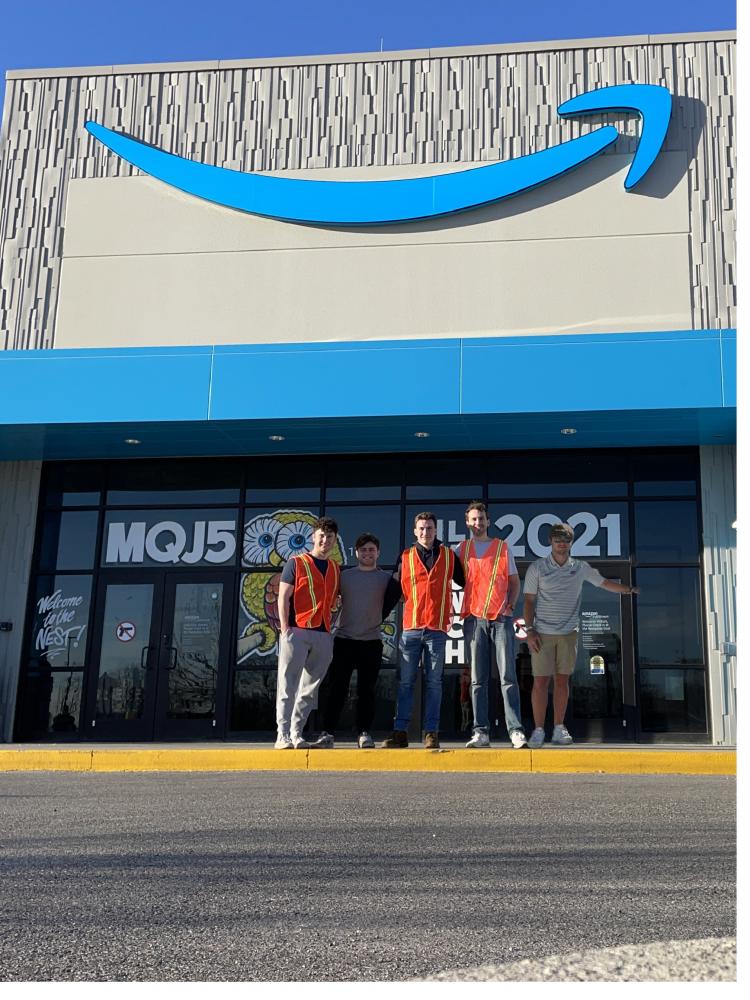The Automated Computer Vision Inspection System for Conveyance is an application that monitors the condition of a conveyor belt used at Amazon Fulfillment Centers. The system is a web application designed to automate the process of monitoring the condition of the conveyor belts. This system uses computer vision to analyze images captured by a camera mounted above the conveyor belt to extract key features such as the straightness of the belt, the number of rips on the belt, and the number of vertices on the belt surface. Based on these features, the system generates a report indicating the condition of the belt and whether maintenance is required. The overall project was divided into three categories: a mechanical fixture, hardware, and software.
The fixture was designed in AutoCAD Inventor based-off of schematics provided by Amazon and built using 1-inch 80/20 and the accompanying fasteners with a 3D printed housing unit for the hardware. The hardware includes the NVIDIA Jetson Nano Developer Kit and a 1080p 60fps USB camera. The app was produced in OpenCV to be locally hosted through a Flask Web server and stored in a secure database through Ethernet.
Semester of Project:
Team Photo:


